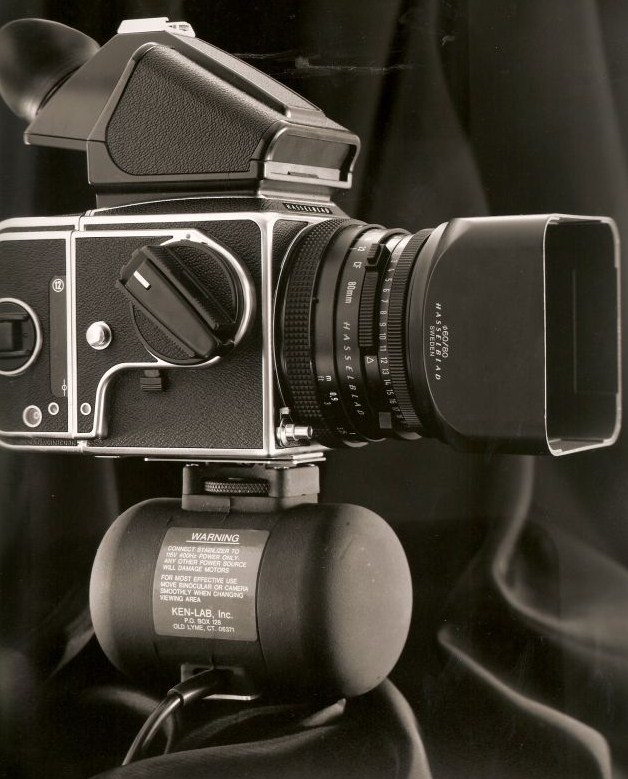So, what is a Kenyon Gyro?
The Kenyon handheld gyro stabilizer was invented by Ted Kenyon in 1957 to help stabilize binoculars and cameras when used in challenging conditions. When wind, waves, air turbulence and vehicle movement make getting usable images difficult, the gyro stabilizer will easily attach to the device to resist the unwanted motion.
The standard 2 axis gyro consists of two heavy metal wheels, spinning at 20,000 rpm. Each wheel has it's own brushless AC motor specifically designed to use very little power to obtain the optimum speed needed to drive the wheels. Each wheel is contained in a restrained gimbal and allowed to precess a certain distance, depending on the weight of the wheel. An inverter is used to to take DC power and convert it to the 115 VAC 400 Hz power needed to operate the gyro. Both wheels counter rotate and work together to resist outside forces the gyro is subjected to. When the gyro is attached to a camera in line with the lens, the gyro resists movement in pitch and yaw, thus the term "2 axis stabilization". If another gyro is used perpendicular to the first gyro, 3 axis stabilization is obtained in pitch, yaw and roll. The new "X" series gyros made by Kenyon today have solved the problem of using two separate gyros by placing four wheels inside a specially designed frame. The result is a "3 axis" gyro that takes up less space and easily attaches to the camera with the use of a quick release clamp instead of a bulky mount solution. Each gyro is made by hand in our facility in the USA. The outer frame is made of 6061 aluminum and is black hardcoat anodized for longevity. Most of the internal parts are also made and assembled by Kenyon so that high precision and quality is maintained guaranteeing a lifetime of use. The advantage of using a Kenyon gyro is that it can be used handheld, in confined spaces, in all weather conditions and can always be repaired if a "gravity event" should occur. Click on the button below to read the history of Ken Lab |
|



